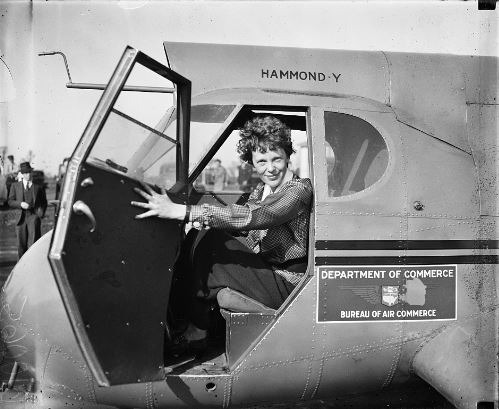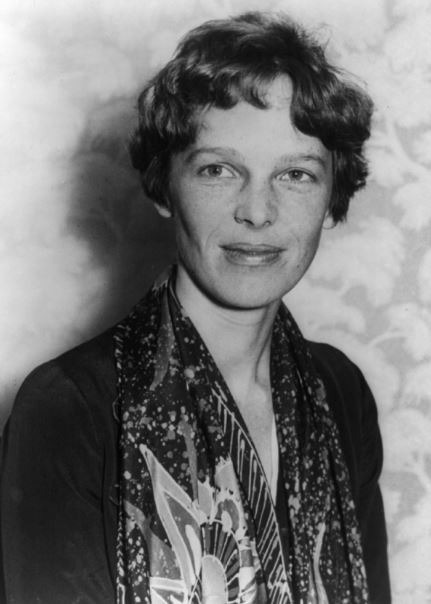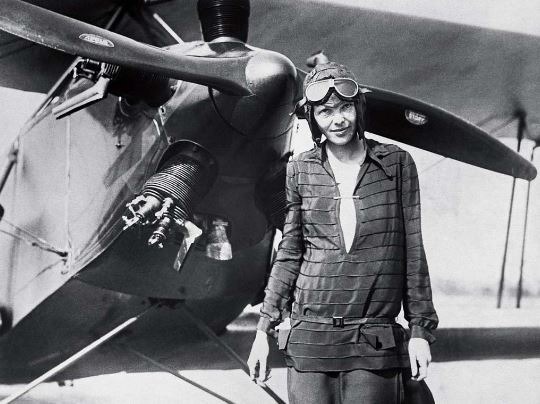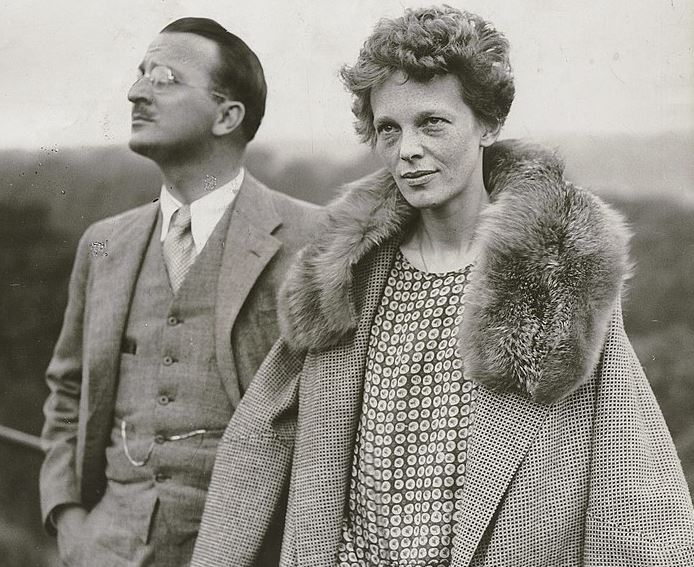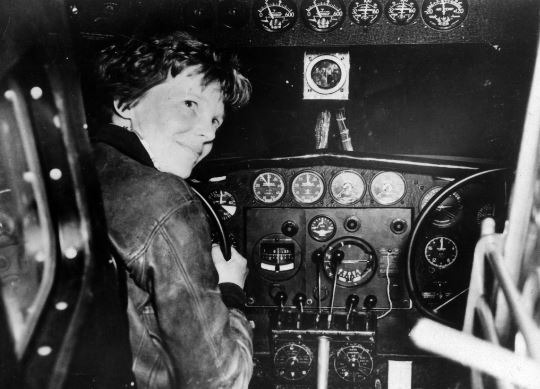People destined to be great always want to be part of something big and adventurous. Some people dream of changing the face of medicine, some desire to explore the great depths of the ocean by snorkeling in the Pacific , while some want to discover the beauty of the obscure parts of the world. Amelia Earhart dared to dream as the first woman to circumnavigate the globe, but though she wasn’t successful with her journey, she was considered great.
Amelia Earhart is one of the most famous pilots in American history and even around the world. Fondly known as Lady Lindy, Earhart is the first female pilot to fly across the Atlantic Ocean in 1928 and the first person to fly over both the Atlantic and the Pacific. She’s a record-setting aviator who was also the first person to fly solo and non-stop across the United States. Tragically, she mysteriously disappeared in 1937 while trying to circumnavigate the world from the equator. Her disappearance became one of the biggest and most enduring mysteries of the 20th century, capturing the public’s imagination and generating lots of theories and claims.
Here’s what you may want to know about Amelia Earhart and her famous final journey:
Early Life
Amelia Earhart was born on July 24, 1897, in Atchison, Kansas. She spent much of her early childhood in the upper-middle-class household of her maternal grandparents. Her father, Edwin Earhart, was a railroad lawyer; and her mother, Amelia “Amy” Otis, came from an affluent family. Her father was on a constant search to establish his career but could never be free from alcoholism. When things got bad, Amy would bring Amelia and her sister Muriel to their grandparent’s house. The sisters sought out adventures there, climbing trees, hunting for rats, exploring the neighborhood, and taking rides on Earhart’s sled.
Their family moved often, and she completed high school in Chicago, where she excelled in chemistry. Her father’s inability to provide for their family led her to become independent. After her mother received an inheritance, Earhart attended the Ogontz School in Pennsylvania. But during a visit to her sister in Canada, Amelia developed an interest in caring for wounded World War I soldiers. In 1918, she left junior college to become a nurse’s aide for the Red Cross in Toronto.
Amelia came to know many wounded pilots and developed a strong admiration for aviators. She spent much of her free time watching the Royal Flying Corps practicing at the nearby airfield.
After the war in 1919, Earhart entered the pre-med program at Columbia University in New York but left a year later to be with her parents in California. There, she went on her first airplane ride, and that experience inspired her to take flying lessons.
In 1921, Earhart bought her first plane, and after two years, she earned her pilot’s license – making her the 16th woman to be issued a pilot’s license. During the mid-1920s, she moved to Massachusetts, where she became a social worker at a settlement home for immigrants and continued to pursue her interest in aviation. She became a member of the American Aeronautical Society’s Boston chapter and was eventually elected as vice president.
Amelia Earhart’s Notable Flights
In 1927, Amelia Earhart flew the first official flight out of Dennison Airport in Massachusetts. Along with being a sales representative for Kinner aircraft in Boston, she also wrote local newspaper columns that promote flying. As her local celebrity grew, she laid out plans for an organization devoted to female fliers.
After Charles Lindberg’s solo flight across the Atlantic in 1927, she was selected for the flight to have a woman fly across the Atlantic Ocean in 1928. After she successfully finished the flight as a passenger aboard a seaplane piloted by Louis Gordon and Wilmer Stultz, Earhart became an international celebrity. She wrote about the flight in 20 Hrs. 40 Min. (1928), and went on a lecture tour across the United States.
Much of the publicity was handled by publisher George Palmer Putnam, who also helped organize that historic flight. Earhart married Putnam in 1931, but she continued her career under her maiden name. That same year, she piloted an autogiro to an altitude of 5,613 meters – a record-setting feat at the time.
Determined to justify fame that her 1928 flight had brought her, Earhart crossed the Atlantic solo in May 1932. This flight earned her the title of being the first woman to fly solo across the Atlantic Ocean. Her flight was completed in a record time of 14 hours and 56 minutes despite several issues, such as inclement weather, mechanical difficulties, and inability to land at her scheduled destination in Paris. She landed on a pasture in Northern Ireland instead.
Her historic flight established her as an international hero. She won many honors, including the Gold Medal from the National Geographic Society, Distinguished Flying Cross from the US Congress, and the Cross of the Knight of the Legion of Honor from the French government. After that, Earhart took a series of flights across the United States.
Earhart also made a solo trip from Honolulu, Hawaii, to Oakland, California, making her the first person to fly both across the Atlantic and Pacific oceans. She also set seven records for women’s speed and distance aviation in a variety of aircraft.
In 1935, Earhart became a faculty at Purdue University as a female technical advisor and career consultant to the Department of Aeronautics. There, she contemplated one last flight to circumnavigate the world.
Final Flight and Mysterious Disappearance
In 1937, Earhart set out to fly to circle the world. She bought a Lockheed Electra plane and pulled together a top-rated crew: Fred Noonan, Captain Harry Manning, and Paul Mantz. Manning was the captain of President Roosevelt and became Earhart’s first navigator. Noonan was the second navigator who had vast experience in both marine and flight navigation. Meanwhile, Mantz was a Hollywood stunt pilot chosen to be Earhart’s technical advisor.
The original plan was to take off from Oakland, California, and fly west to Hawaii. From there, the group was supposed to fly across the Pacific Ocean to Australia, then cross India to Africa, then to Florida, and back to California.
On March 17, the team took off from Oakland on the first leg. However, they experienced some problems flying across the Pacific and landed in Hawaii for some repairs in Pearl Harbor. After three days, something went wrong. Earhart lost control and looped the plane on the runway. Though no one was hurt, the plane was severely damaged and had to be shipped back to California for significant repairs.
Earhart and her husband secured additional funding for a new flight, but the stress of the delay and fund-raising appearances left Earhart exhausted. When the plane was repaired, wind changes and weather patterns required changes on the original plan. This time, Earhart and her team would fly East. Captain Manning and Mantz were unable to join her for the second attempt.
On June 1, Earhart and Noonan began their 29,000-mile journey and departed from Miami, heading east. After the following weeks, they made various refueling stops before reaching Lae, New Guinea, on June 29. About 22,000 miles of the journey have been completed after that. The remaining 7,000 miles would take place over the Pacific Ocean.
The duo departed on July 2, headed for Howland Island. The flight was expected to be difficult because the tiny coral atoll was hard to locate. Two brightly-lit US ships were stationed to mark the route to aid in navigation. Because they lack high-octane fuel, the plane only carried around 1,000 gallons of fuel – 50 gallons short of full capacity.
Though the flyers have a well-thought-out plan with many contingencies, several early decisions led to serious consequences later on. They left behind radio equipment with shorter wavelength frequencies to allow more room for fuel canisters.
The crew ran into difficulty almost from the start. Witnesses of the takeoff on July 2 reported that a radio antenna might have been damaged. It’s also believed that Noonan had a difficult time with celestial navigation. It was also later discovered that the duo was using inaccurate maps. According to experts, evidence shows that the charts used by Earhart and Noonan put Howland Island about six miles off its actual position.
As Earhart and Noonan reached the supposed position of Howland Island, they maneuvered to the north and south tracking route to find the island. There were looking for visual and auditory signals from the Itasca, a US Coast Guard cutter near Howland, but radio signals were very poor that day for many reasons. There was also confusion between the plane and Itasca over which frequencies to use. The flyers were also operating on Greenwich Civil Time, while the Itasca was operating in naval time zone.
At 7:20 AM of July 2, Earhart reported her position at 20 miles southwest of the Nukumanu Islands. At 7:42, the Itasca picked up a message from Earhart, saying, “We must be on you, but we cannot see you. Fuel is running low. Been unable to reach you by radio. We are flying at 1,000 feet.” The ship replied, but there wasn’t any indication that Earhart heard the message. The last communication from the plane was at 8:43 AM, with Earhart announcing, “We are running north and south.” However, the transmission was questionable. The Itasca released oil burners to signal the flyers, but they did not see it. It was most likely that their tanks ran out of fuel, and they had to ditch at sea.
When the Itasca realized they had lost contact, they started an immediate search. The plane was believed to have gone down a hundred miles from the island. But despite the efforts of nine ships and 66 aircrafts – about $4 million rescue operation authorized by President Roosevelt – the fate of the two flyers remained a mystery.
On July 19, 1937, the official search operation was called off, and the pair was declared lost at sea. However, Putnam financed additional search efforts, working with naval experts and even psychics in an attempt to find his wife. But in October, he acknowledged that any chance of Earhart and Noonan surviving was gone. He requested Earhart to be declared dead in absentia, and she was declared legally dead on January 5, 1939.
